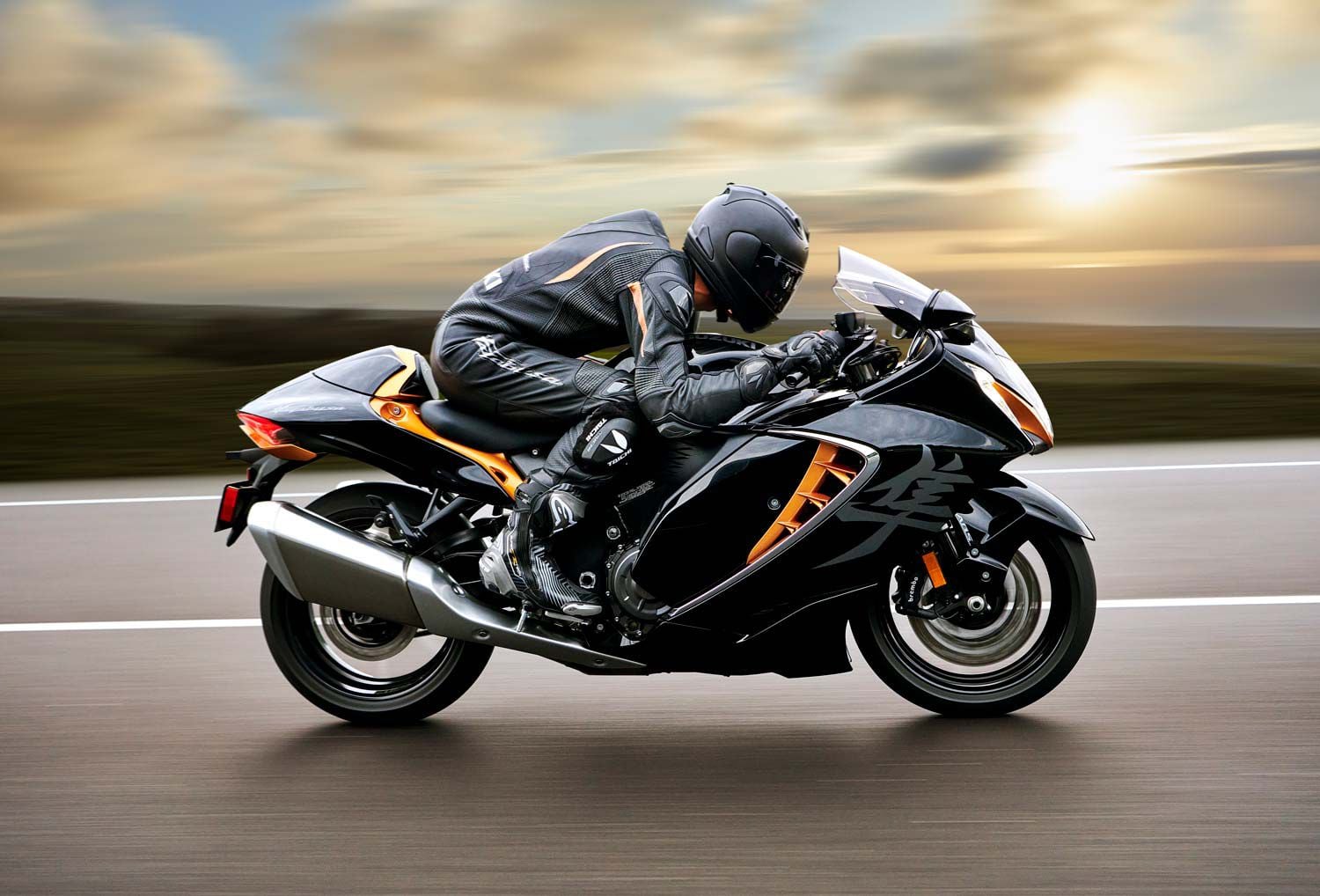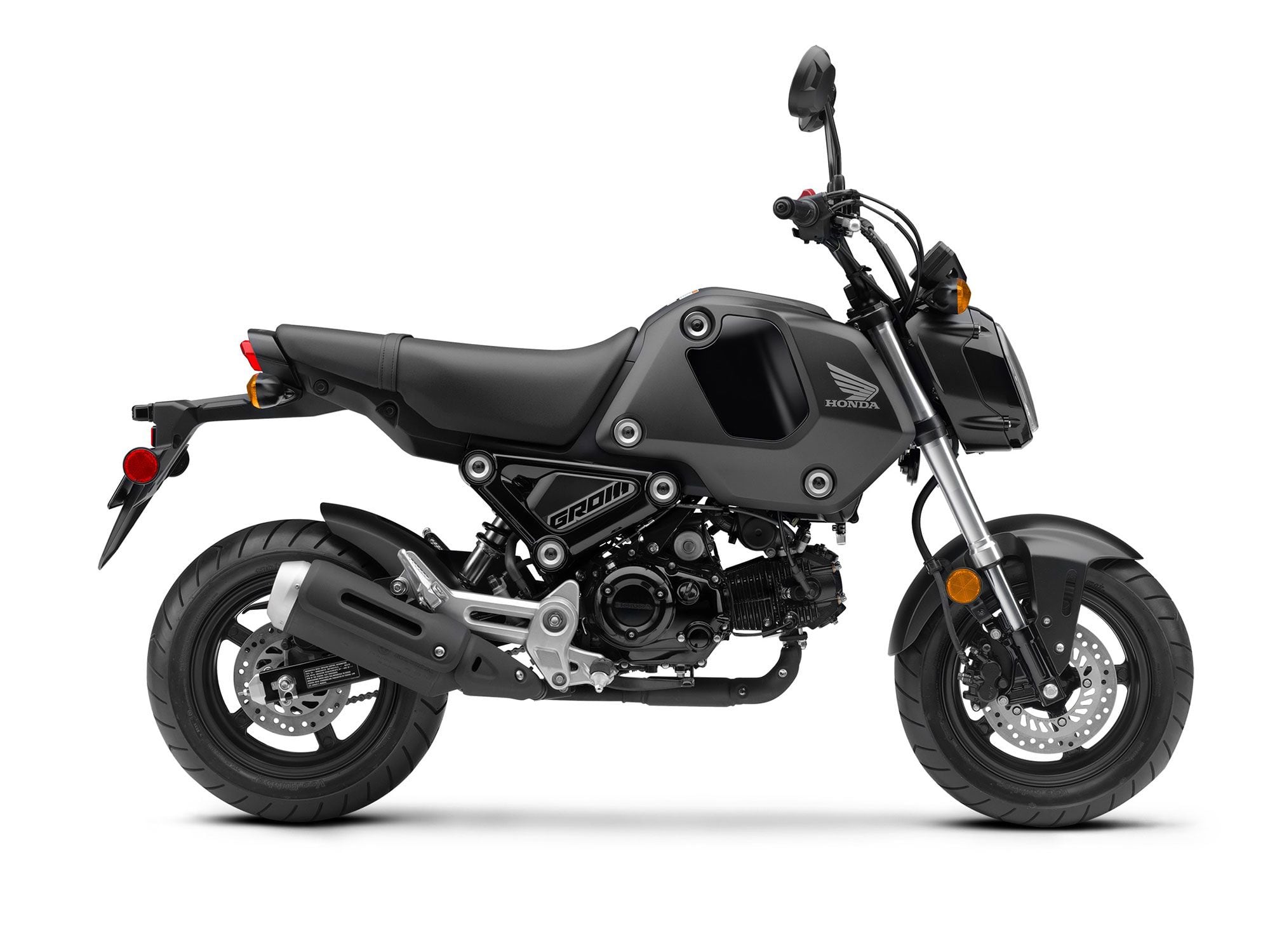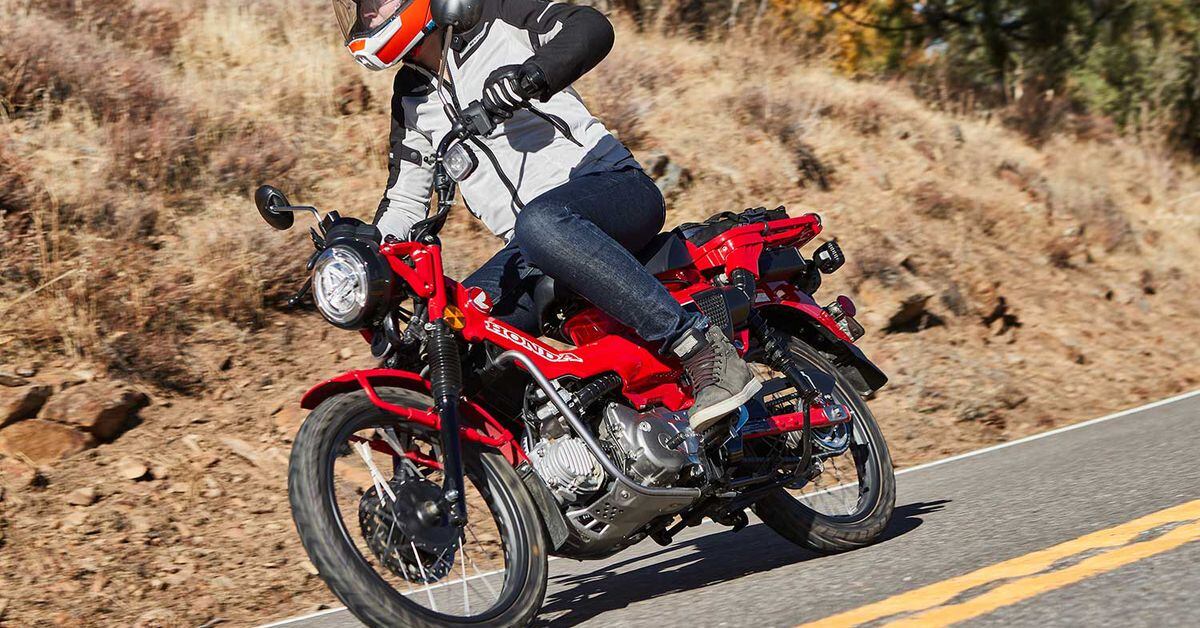Suzuki knows the Hayabusa will see modified engines and induction systems, so has made changes to the GSX1300R’s engine to increase durability. (Suzuki/)The Suzuki Hayabusa is unusual in that so many of its users modify the engine, sometimes subjecting it to loads four or more times greater than it was designed for. Suzuki engineers are well aware of this, and furthermore, management knows it’s essential to maintain this engine’s reputation for durability. It is only when no avenues of possible improvement remain that an engine is regarded as obsolete.
In stock form, Hayabusa makes its power more through its 1,340cc displacement rather than revs. When turbocharged, it makes truly impressive power through much higher combustion gas pressures acting on its piston crowns. Fallible beings that we are, we seek ever more power, and the stress created by making that power requires periodic technical changes to handle that stress.
Improved Crankshaft Oiling
Engine survival depends on the oiling system. Even a momentary oil delivery shortfall or hiccup can result in a spun rod bearing, a situation in which under-lubricated bearing shells seize to the crank journal and spin in the rod or case. In the Hayabusa’s previous design, oil from the main gallery below the crank was supplied to the five main bearings; from four of those grooved and cross-drilled main bearings, oil entered drillings in the crank that conducted oil to the four adjacent crankpins. The upper main bearing shells, being less loaded, have a central groove. That, along with the cross-drilling of the main crank journals, assures there is always an open flow path from the oil pump, then into that groove, into the main journal, and ultimately by interior drillings to each crankpin and con-rod big-end bearing.
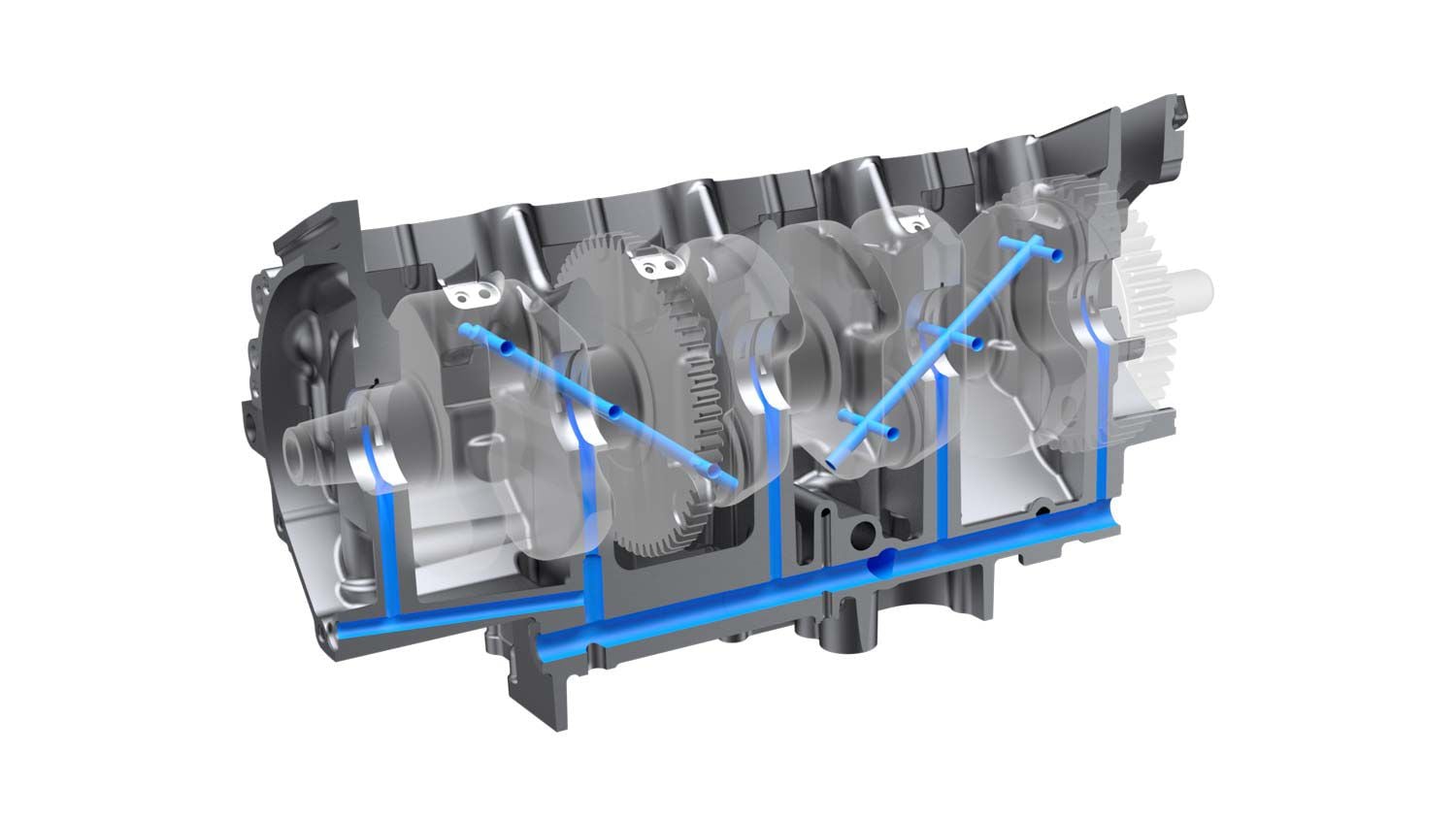

The 2022 Hayabusa features new oil passages for better oil supply and durability. (Suzuki/)In the new design, a pair of diagonal internal drillings join the numbers 1-and-2 and 3-and-4 crankpins, passing through the main journal between them, where they pick up oil. From the graphics supplied by Suzuki, it appears that all crankpins are now also cross-drilled. Suzuki tells us that these changes have increased crank-bearing oil flow by more than 50 percent—without any change to the oil pump.
The Oil Pump’s Job Is to Replace Oil Lost From Bearings
Loads on crank bearings are not supported by pressure from the oil pump—it just pushes oil into the unloaded side of each bearing, while the very high pressure that supports the loads is generated by the viscosity of the oil, being swept constantly into the loaded zone by crank rotation. Loaded-zone pressure in supercharged engines can exceed 10,000 psi—more than 150 times stock pump pressure. The aim of cross-drilling is to ensure that the low-pressure side of every bearing is constantly able to receive “refill oil” from the pump. Bearing loads squeeze oil out the sides of the bearing, and the pump’s job is to continuously replace it. These changes have made that job easier.
Reducing Crankcase Distortion During Assembly
In an engine as heavily stressed as those in many modified Hayabusas, it is essential that the tightening of the bolts holding the cases together be uniform so distortion doesn’t occur. Crankcase distortion can result in unequal or edge loading of bearings. To achieve uniformity of bolt tension, Suzuki has switched from torque-based bolt tightening to angle-based. Torque-based tightening can work well if friction is identical from one bolt to the next, but angle-based tightening eliminates friction as a possible source of variation in bolt tension. The bolts are run in until they make solid contact, then are tightened by rotating each one through a specified angle. It’s spooky but reassuring to watch this on an automated production line.
Roll-formed Internal Threads in the Crankcase
Another durability improvement is a switch from internal case threads, which are cut with a tap, to cold-forging them by internal thread rolling. The advantages of roll-formed threads are that the material is work-hardened by cold-forming and the thread surface material is placed in compression by the high-pressure rolls. Cracking under stress requires tension, so putting residual compression into the threads means that applied load must first overcome that compression to even begin to create tension. The result is threads with a greater margin against failure. In one study I found, switching from cut to rolled threads increased strength 23 percent.
Improved Pistons and Con-rods
Today’s short “ashtray” pistons have a very short heat path from the hot piston crown to the wrist pin bosses. Raising boss temperature, plus very heavy loading, can lead to lube failure and scoring or the pickup of aluminum piston material on the wrist pin. This would be especially likely under the much higher pressures of turbocharged combustion. In fact, this happened when Ducati’s 916 went racing, and also in some modified BMW S 1000 RR applications. Part of the solution is the piston-cooling oil jets found in modern engines, but there is also another way. That is to maximize the area of wrist pin support in the rod and piston to more easily carry combustion loads, while sacrificing some bearing area in the opposite direction.
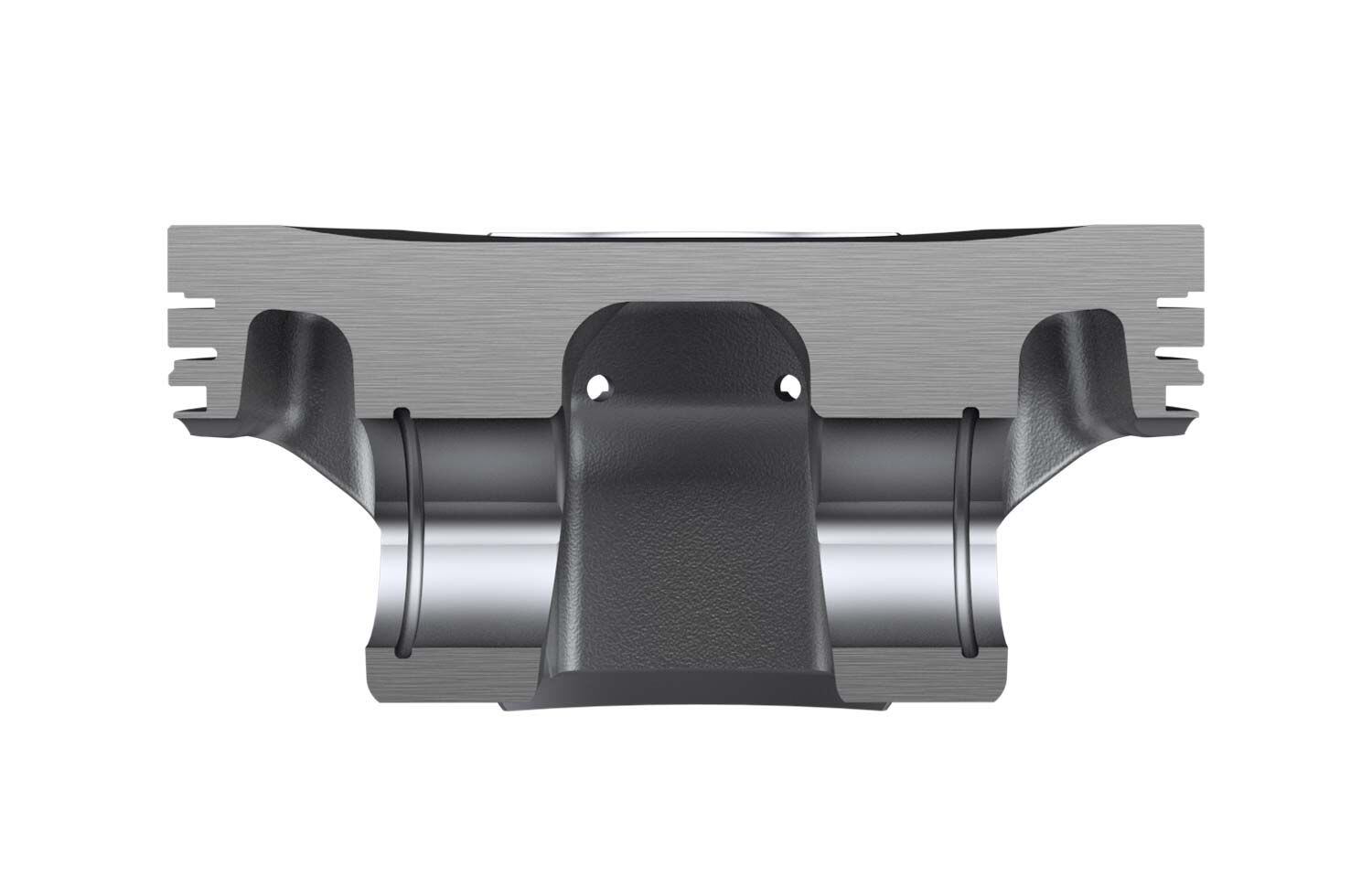

A cross section on the 2022 Hayabusa’s piston. (Suzuki/)Tapering the sides of the small-end bearing in the rod (narrower at the top) places maximum width at the bottom to bear combustion loads, and tapering to a narrower width at the top where the only stress is that required to pull the piston downward on its intake strokes. The inner faces of the piston’s wrist pin bosses are similarly angled to maximize boss width at the top, where the piston bears hard against the top of the wrist pin. Such tapered-top rod small ends have been used in many designs to gain bearing area to reliably carry high combustion pressures. Supercharged aircraft piston engines were a prime example.
Incidental reductions in piston and con-rod weight were also achieved—26 grams per piston and 3 grams per con-rod. The wrist pin has also been made shorter.
Gearbox and Shifting Changes
Gearbox shafts are typically supported at one end by a ball bearing, which positively locates the shaft endwise. The other end is then supported by a needle roller, which is able to accommodate the difference in thermal expansion between the steel shafts and aluminum case. The length of those rollers has now been increased by 18 percent. Suzuki tells us that in adopting a quickshifter, some detailed gearbox changes were required; these longer needle rollers plus changes to the gear selection mechanism.
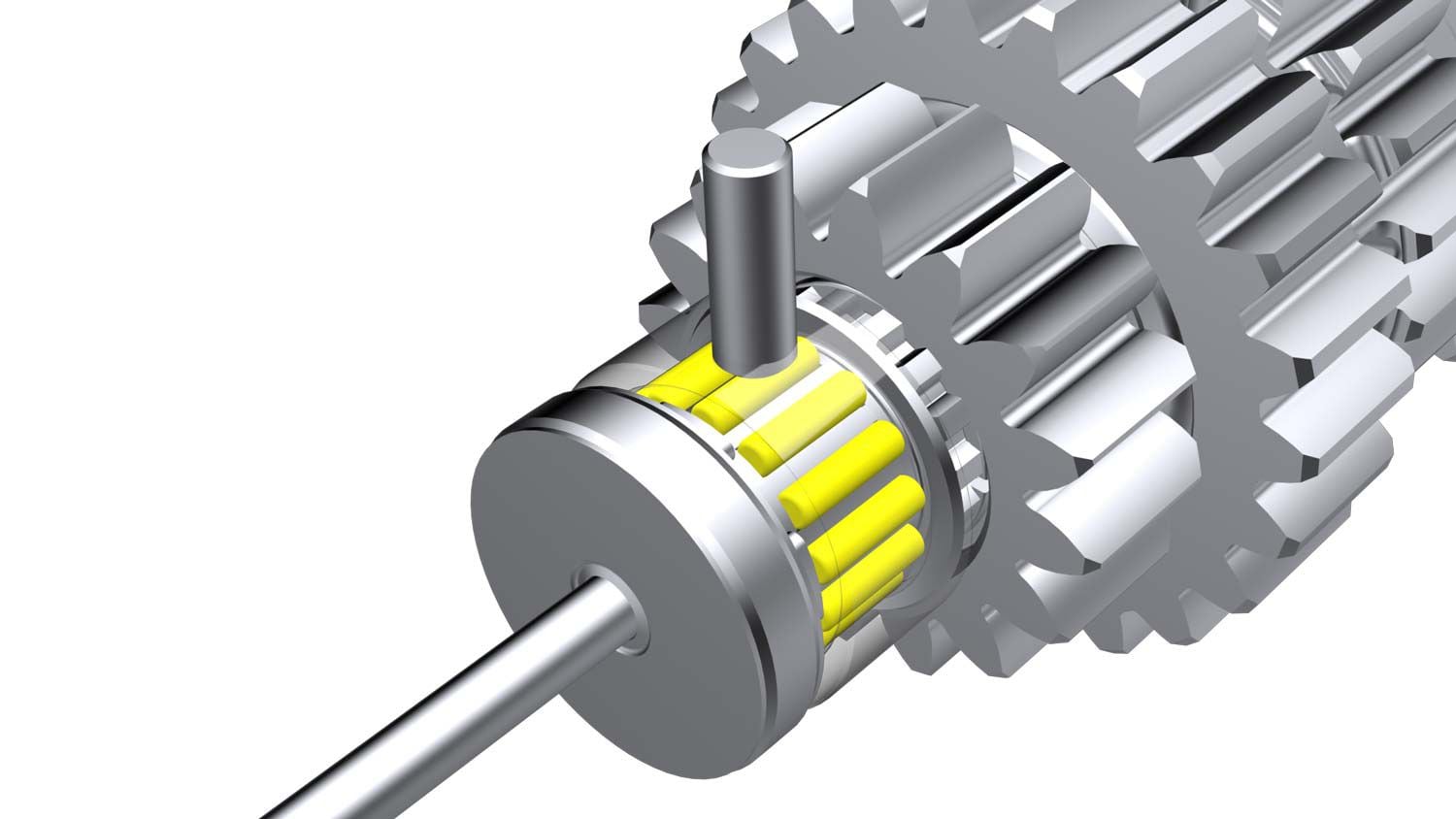

A new gearbox needle roller bearing featuring new longer rollers. (Suzuki/)There is also an improved slipper-assist clutch, and updates have been made to shifting to work with a bidirectional quickshifter. Plate-to-plate pressure and clutch slip torque are through ramps increased by engine torque, making some reduction in clutch lever pull force possible (no more “Oh my aching wrist tendons!”), and when the torque goes the other way (rear wheel driving the engine on closed throttle) back-torque acting through those ramps reduces plate-to-plate friction, allowing slippage during braking to prevent the upset of dragging or hopping of the rear wheel.
Related Content: 2022 Suzuki Hayabusa Tech Explained
Stiffer Valve Springs and Wider Cam Lobes
As part of reducing emissions, valve overlap and duration (the number of crank degrees during which the valve is off its seat) have been slightly reduced. By requiring the same valve motions to be performed in slightly less time, this increases the accelerations required from both cam and spring to make the valve and tappet follow the cam contour. To prevent possible valve float, a phenomenon in which the valve train fails to follow the cam contour and instead rises or “floats” off of it, stiffer valve springs have been provided. To enable the oil film between cam lobes and their tappets to carry these increased acceleration and spring loads, the lobes have been made a bit wider; the heavier the surfer, the bigger the board.
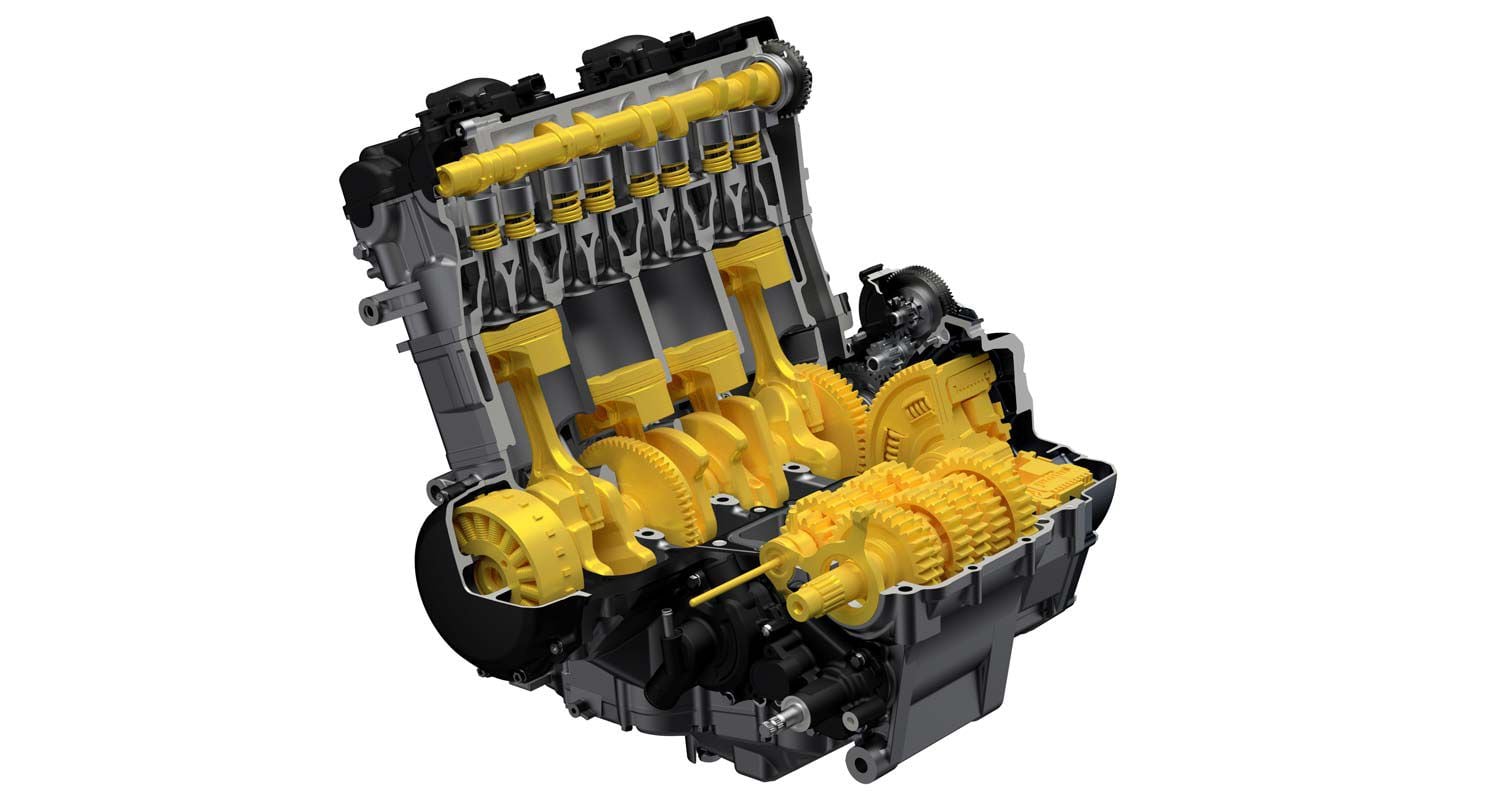

Stiffer valve springs combat valve float as valve opening duration decreases in the 2022 Hayabusa. (Suzuki/)Because the Hayabusa engine is an older design and is not under pressure to run at ever-higher revs, as sportbike powerplants did in their day, it continues to use the classic inverted-bucket valve tappets rather than the lighter finger followers found in the most recent engines. Indeed, the Hayabusa is remarkable for its low peak-power rpm of 9,700. That rpm, with the 65mm stroke, gives a moderate peak piston acceleration of 4,300g. Compare this with 600 Supersport numbers as high as 7,000g, and the 10,000g of the 20,000-rpm era in F1.
Improved Cooling
Just as it’s possible to space an air-cooled engine’s cooling fins so close together that cooling becomes worse rather than better, so it is with radiators. Suzuki has increased the throughput of cooling air past Hayabusa’s radiator by about 8 percent.
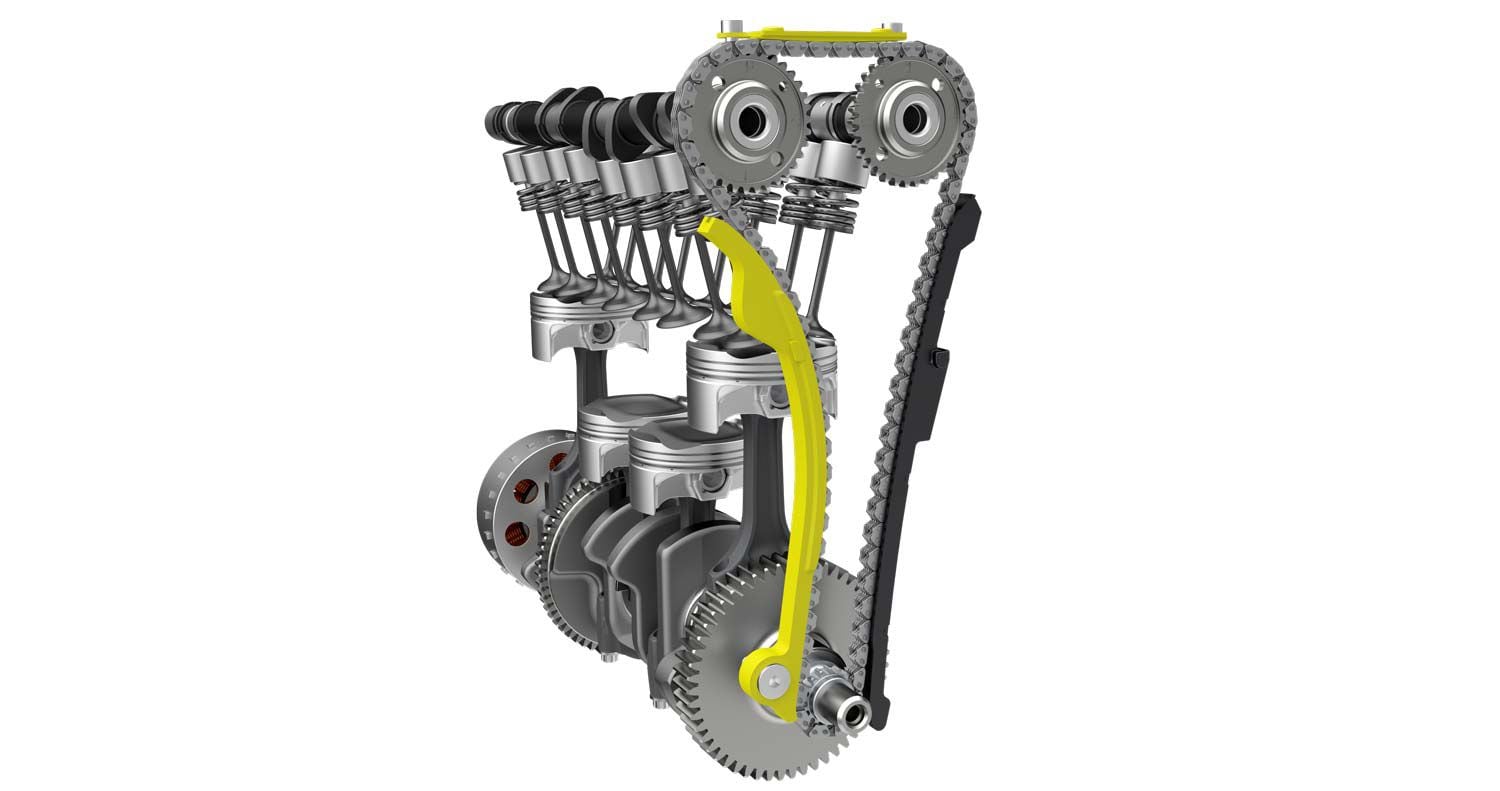

The cam-chain tensioner has been redesigned to minimize chain runout and is slipperier. (Suzuki/)Improved Cam Drive
Engineers are delighted when cam drives function reliably, because they know that all kinds of unwanted oscillations and parts damage can result when things are a little off. Why? Because the crankshaft doesn’t rotate smoothly, but rather in a series of speed variations as each cylinder fires. And because the cams’ resistance to rotation takes the form of sudden resistance, as valves are accelerated up off their seats, and sudden speed-up as fast-closing valves decelerate to seat at a survivably low speed (valves do not snap shut—that would quickly break them). Connecting two such “lumpy” processes together with a chain requires creative cut-and-try. In this case, Suzuki has redesigned the cam-chain tensioner “to minimize chain runout” and have added a slippery “Teflon veneer on the slipper surface” to reduce friction. Keeping up, not with the Joneses, but with the stress produced by hard-riding owners.
Reading about all this improvement, I’d like to have my own design updated.


